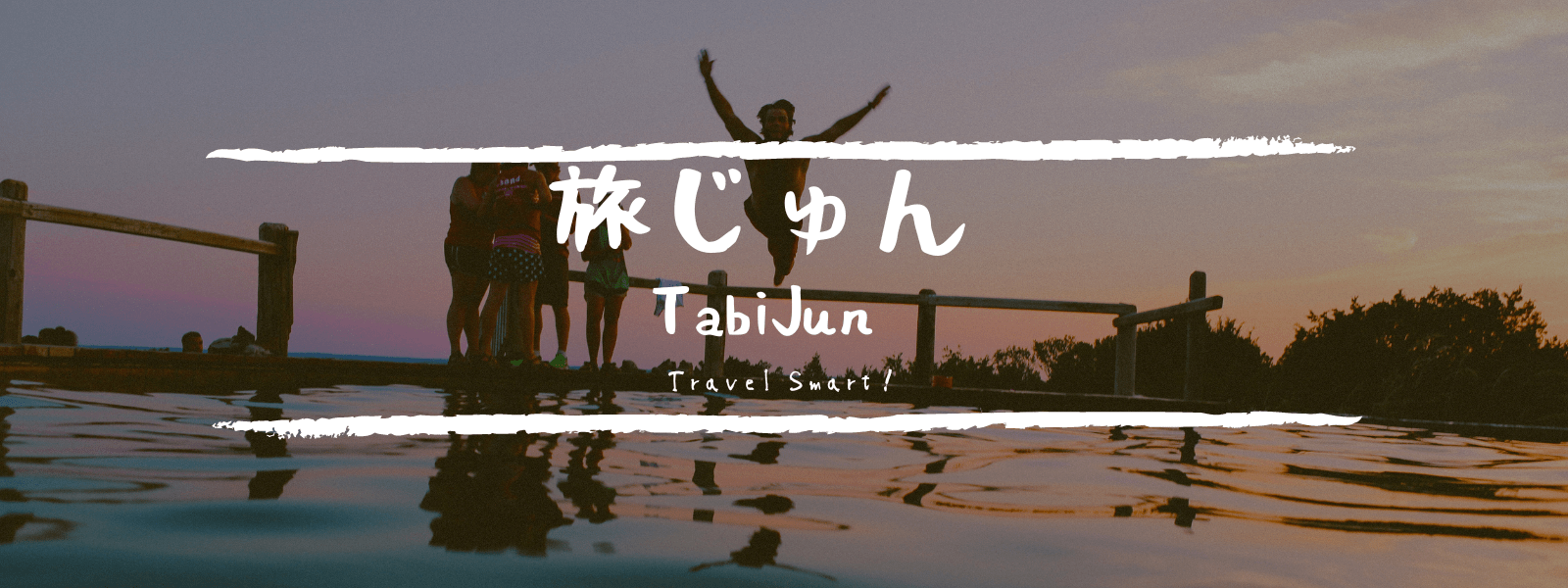Hello, fellow travel lovers!
Today, I’d like to introduce you to one of Kamakura's famous spots, Hasedera Temple.
- The Charm of Hasedera: A Famous Temple Known as the 'Temple of Flowers
- Avoiding the crowds, I arrived at Hasedera at 8:30 AM! Let me share some parking tips too.
- Enmusubi Jizo (Good Fortune Jizo)
- The Hydrangea Path and Stunning Views: A Walk Surrounded by Full-Bloom Hydrangeas!
- Highlights of Hasedera: Exploring the Eleven-Faced Kannon Statue and the Kannon Museum
- Benten Cave and Moss-Covered Stone Walls: Experience the Mysterious Atmosphere!
- One Thousand Jizo Statues: A Stunning Sight, and Anyone Can Apply!?
- Manji Pond and Hydrangeas
- Summary: Tips for Enjoying Hasedera While Avoiding the Crowds and Looking Forward to Next Time
The Charm of Hasedera: A Famous Temple Known as the 'Temple of Flowers
Hasedera Temple, located in Kamakura City, is a renowned spot that offers the beauty of nature throughout the seasons and a sense of peace. Also known as the 'Temple of Flowers,' it attracts a large number of visitors, especially during hydrangea season. It’s so popular that tickets often need to be reserved in advance.
This time, I was late in reserving and the time slot I wanted was already sold out…💦 (It’s really that popular!)
Avoiding the crowds, I arrived at Hasedera at 8:30 AM! Let me share some parking tips too.
Avoiding the crowds, we arrived at Hasedera at 8:30 AM.
There was still plenty of space in the 30-car parking lot, but if it’s crowded, I recommend using the larger private parking lot just before the temple.
It takes a bit of a trick to use the Hasedera parking lot. You’ll need to ignore the attendants directing you to the private parking and pass the big 'Hasedera Parking' sign by the traffic light. If you do, you can park right near the temple entrance!
After purchasing my admission ticket, the first place I headed to was the 'Hydrangea Path.
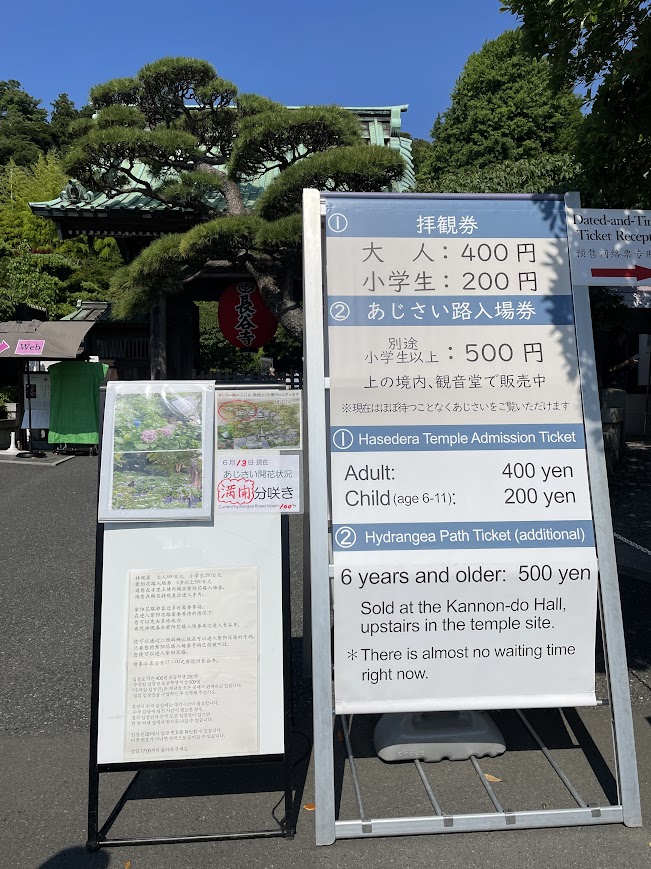
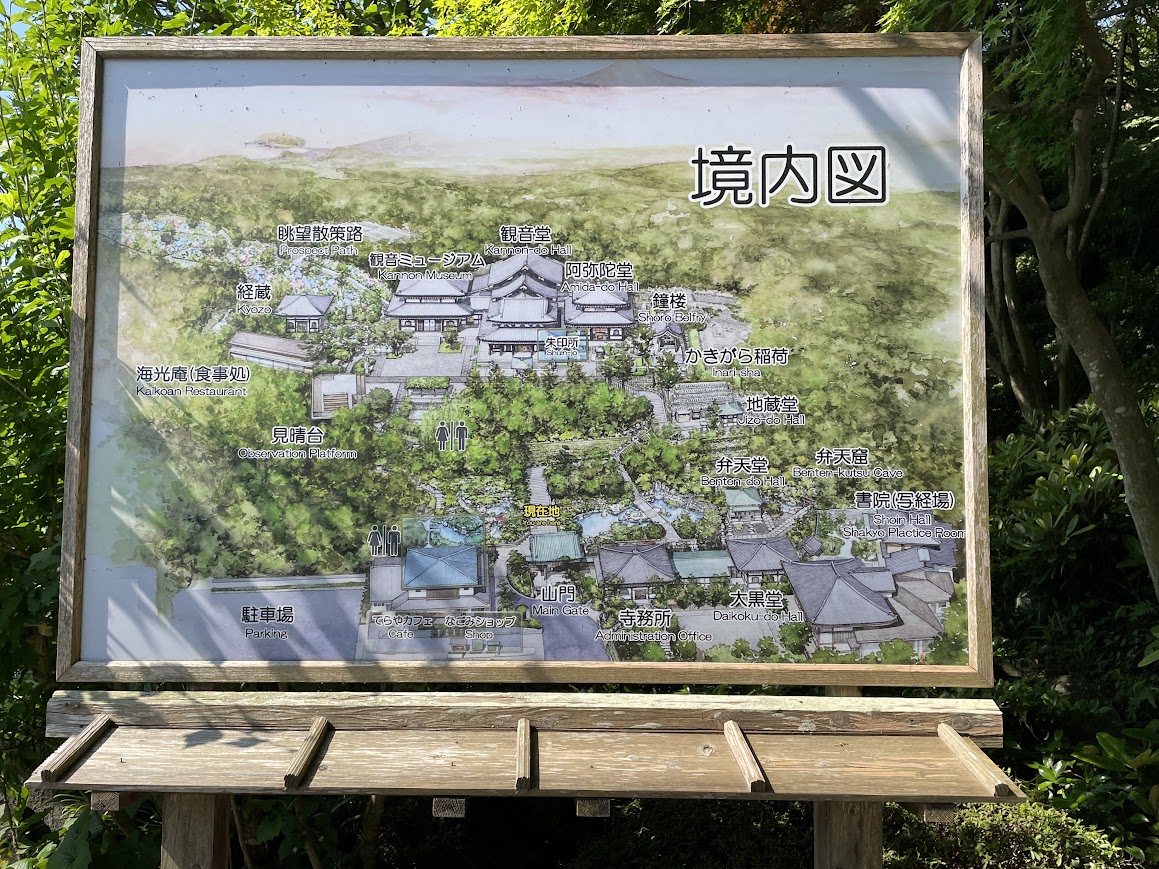
The Ajisai Path, which we're aiming for this time, is located on the scenic walking trail in the upper left corner of the map.
Enmusubi Jizo (Good Fortune Jizo)
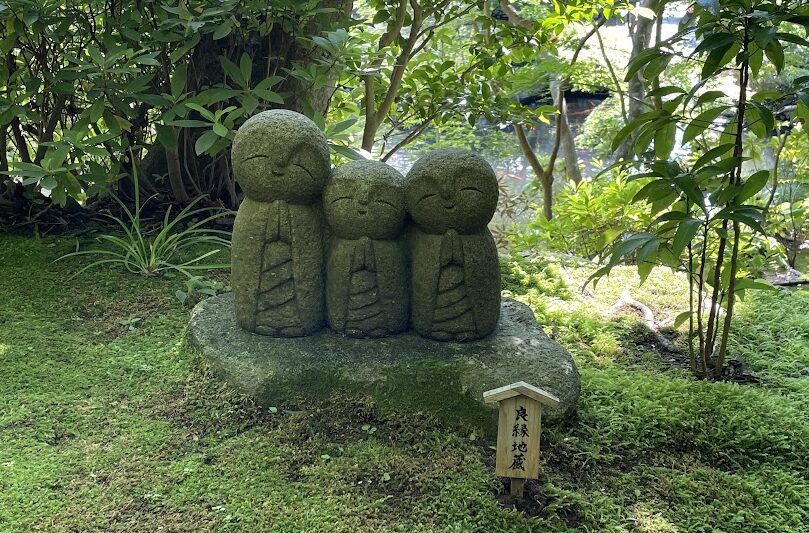 Right after entering, I was greeted by the 'Good Fortune Jizo' statues standing close together. The cool, shaded atmosphere was soothing and heartwarming.
Right after entering, I was greeted by the 'Good Fortune Jizo' statues standing close together. The cool, shaded atmosphere was soothing and heartwarming.
The Hydrangea Path and Stunning Views: A Walk Surrounded by Full-Bloom Hydrangeas!
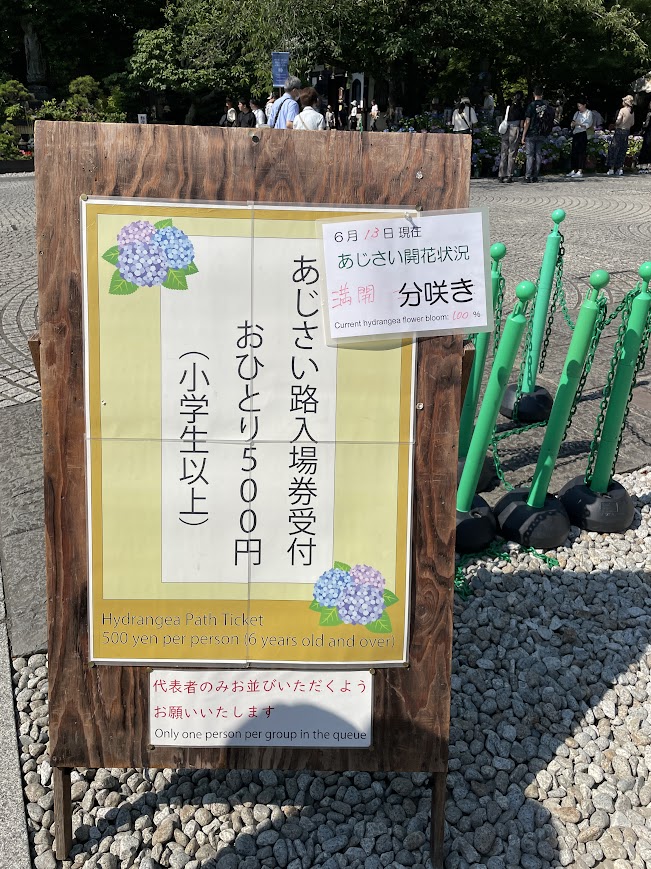
The main event of the day—hydrangeas! Seeing the sign saying they were in full bloom got me excited. Yay!
I bought my admission ticket just before the Hydrangea Path entrance without having to wait in line.
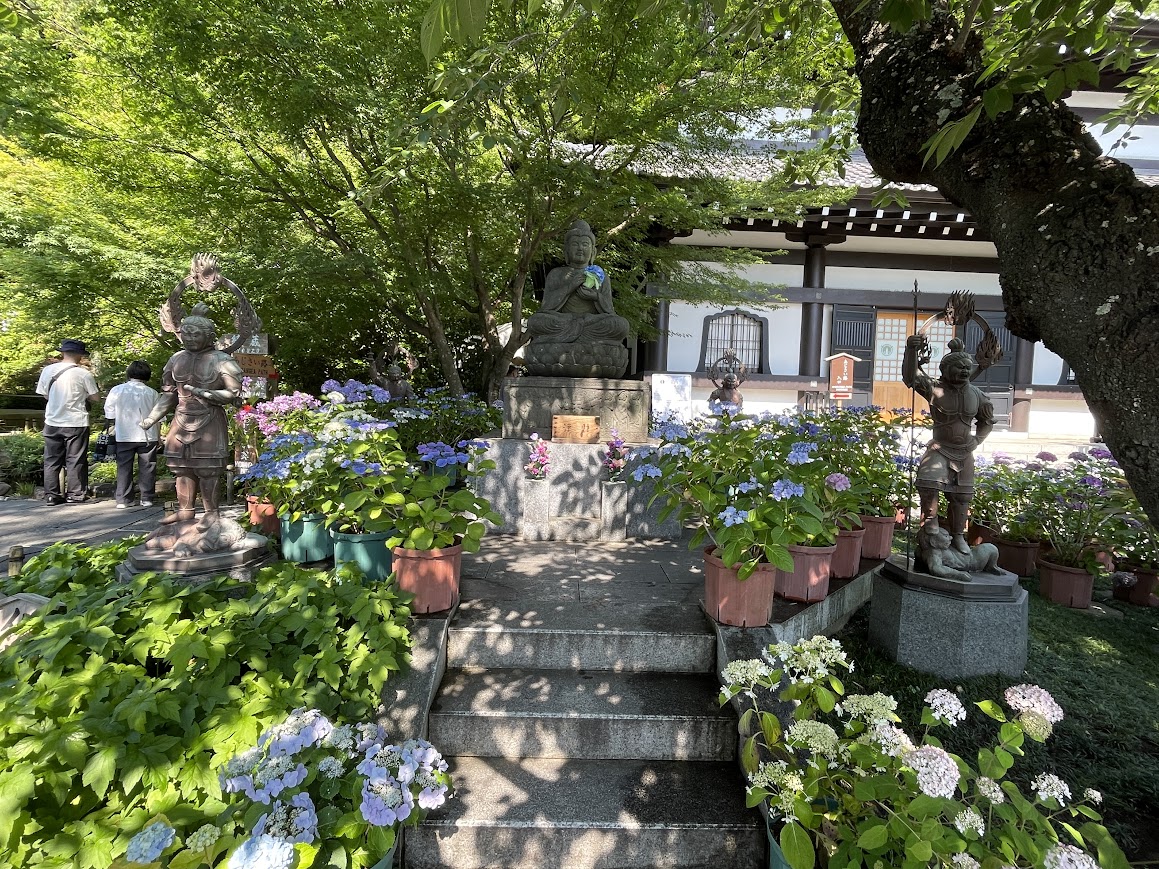
The statue holding hydrangeas is quite heartwarming.
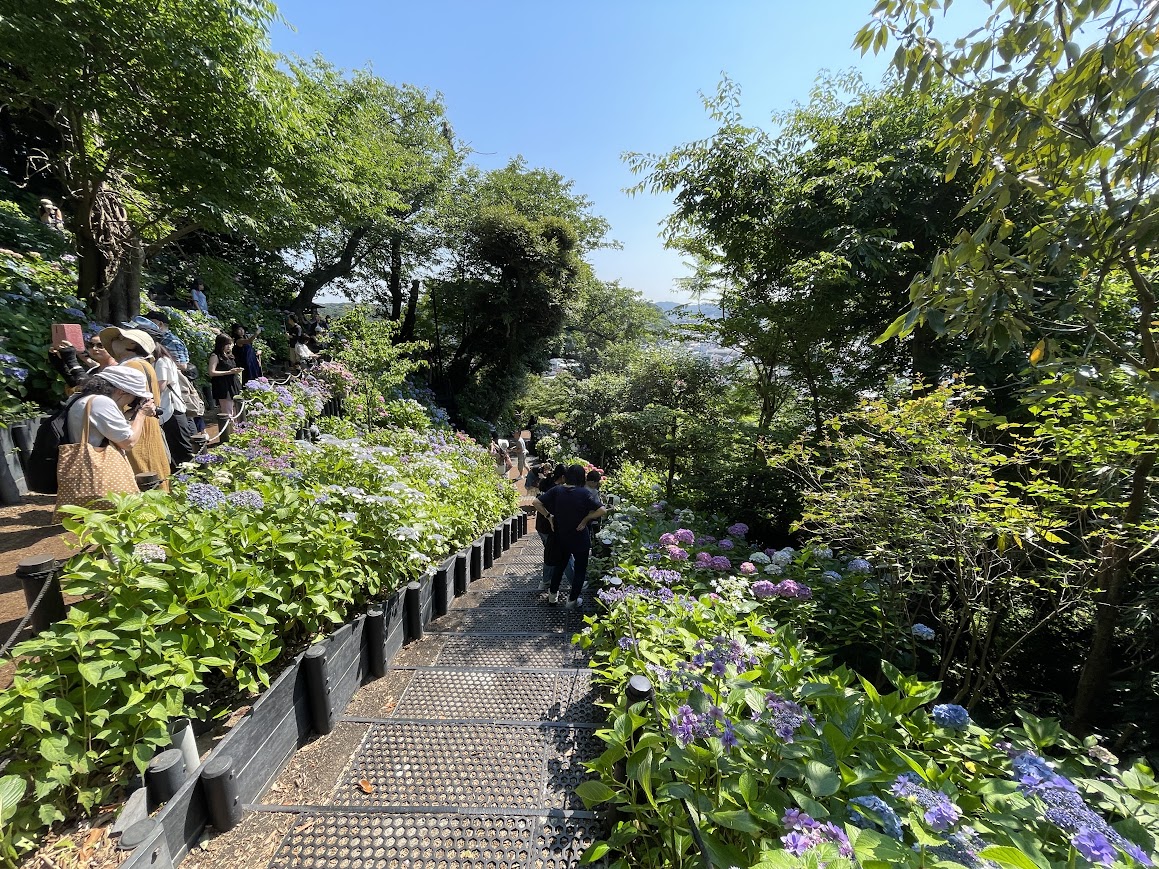
The Hydrangea Path winds along the slope, and the combination of the blue sky and hydrangeas is simply breathtaking!

The stunning view of the bamboo grove, hydrangeas, and the Kyōzō (sutra repository), with what I think is Sagami Bay in the distance, was absolutely breathtaking!
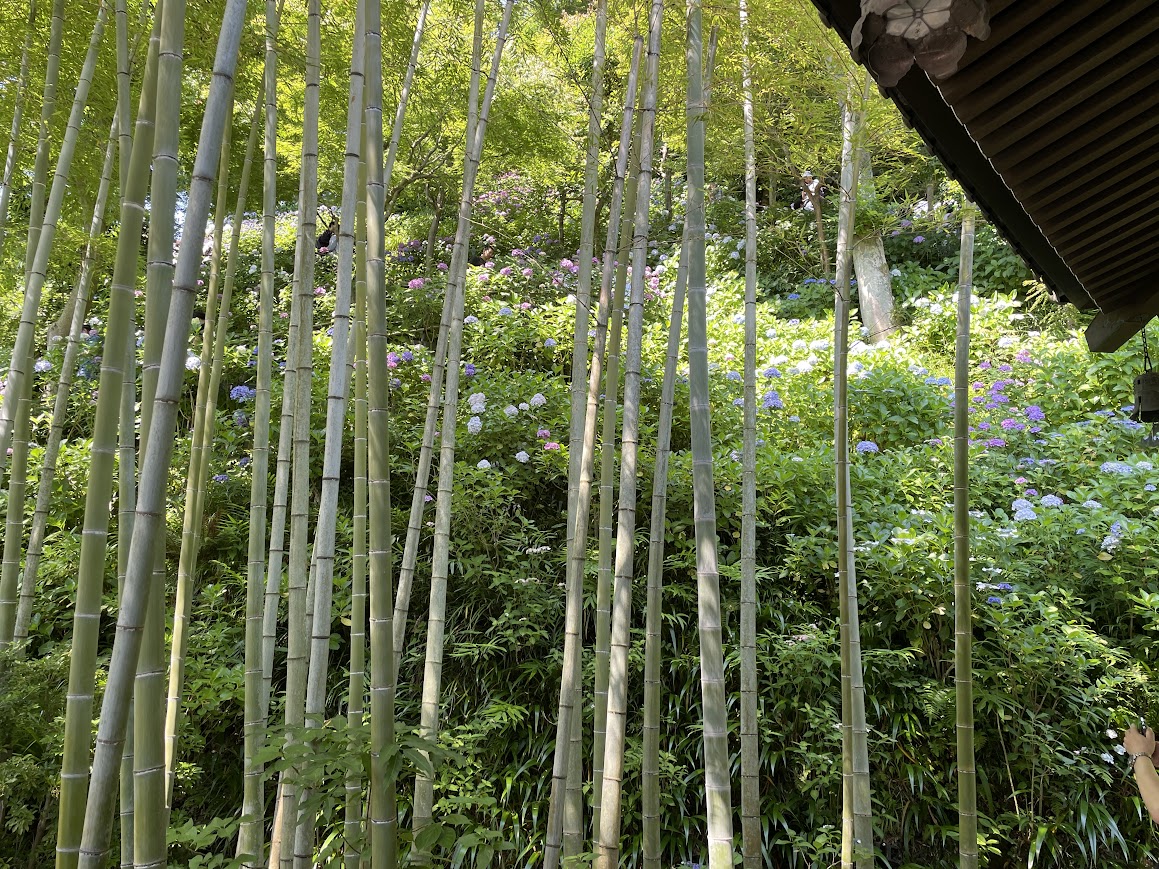
The view from the sutra repository looks something like this.
The combination of the bamboo grove and hydrangeas looked so refreshing! Though it seemed cool, in reality, it was a hot summer day, and I was sweating buckets! 💦
I thoroughly enjoyed the full bloom of hydrangeas for a while.
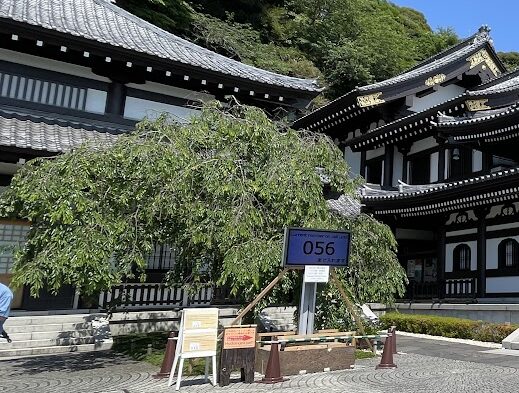
By the time we finished enjoying the spectacular view and left, they had already imposed entry restrictions.
Highlights of Hasedera: Exploring the Eleven-Faced Kannon Statue and the Kannon Museum
In the main hall, you'll find the Eleven-Faced Kannon Bodhisattva statue, which stands at an impressive 9.18 meters, making it one of the largest in Japan. Although photography was not allowed, its sheer presence was overwhelming.
At the Kannon Museum, you can see exhibits like the 'Statue of the Thirty-Three Manifestations of Kannon Bodhisattva,' designated as a cultural property by Kamakura City. Here, photography is allowed, so I was able to enjoy these cultural treasures up close.

The Thirty-three Manifestations of Kannon Bodhisattva Standing Statues. Designated as cultural assets by Kamakura City.
I managed to capture some pretty Instagram-worthy photos!
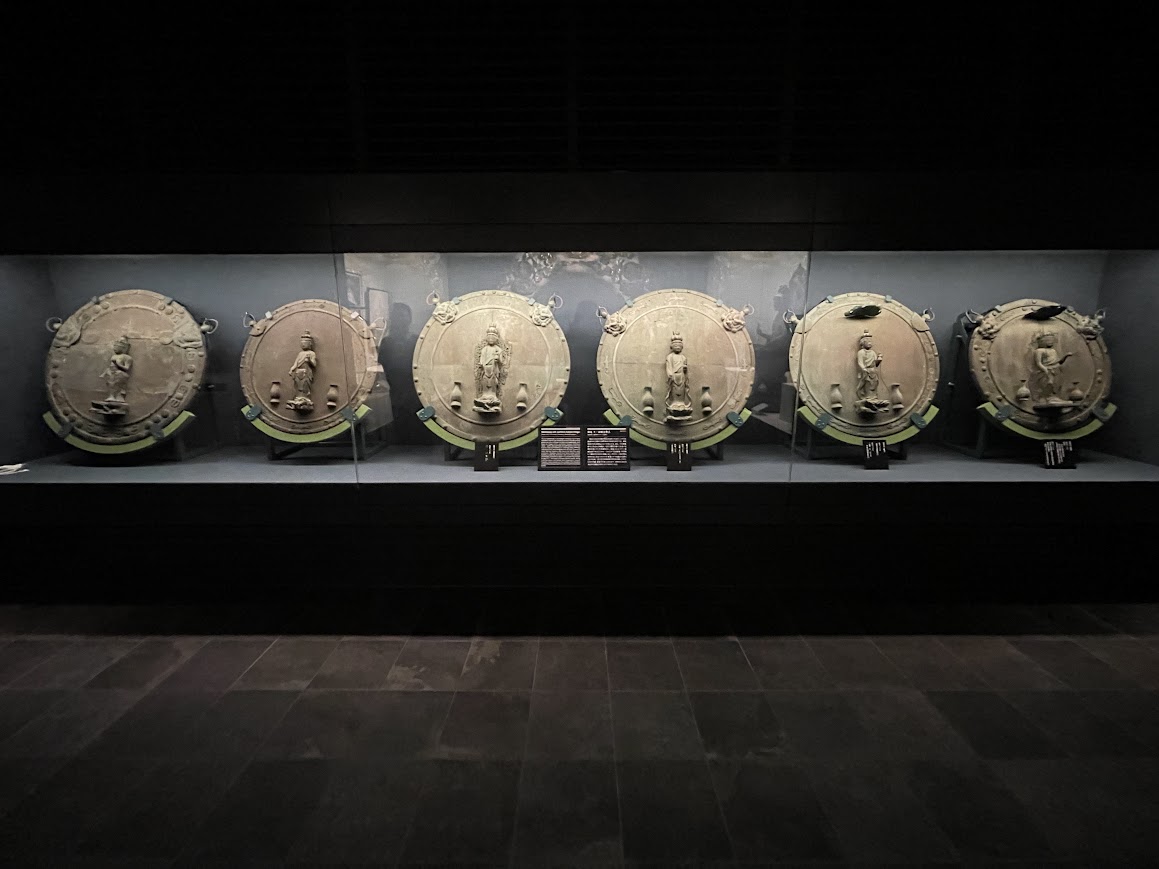
The Eleven-Faced Kannon Kakebotoke, a Nationally Designated Important Cultural Property, is also on display. It’s a bronze or metal disk with an embossed or attached image of a Buddha.
Benten Cave and Moss-Covered Stone Walls: Experience the Mysterious Atmosphere!
Next, I visited the 'Benten Cave,' where it's said that Kobo Daishi once prayed.
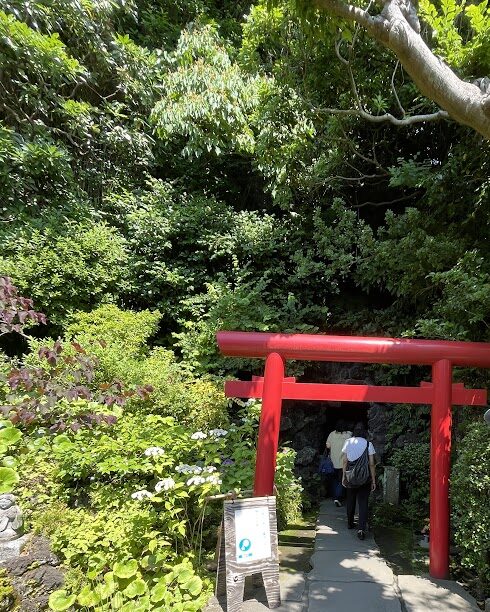
Passing through the torii gate, you enter the cave.

Inside the cave, it was dim and cool, with a mystical atmosphere all around.
This photo... is a bit blurry, but there were several spots where many Buddha statues were enshrined.
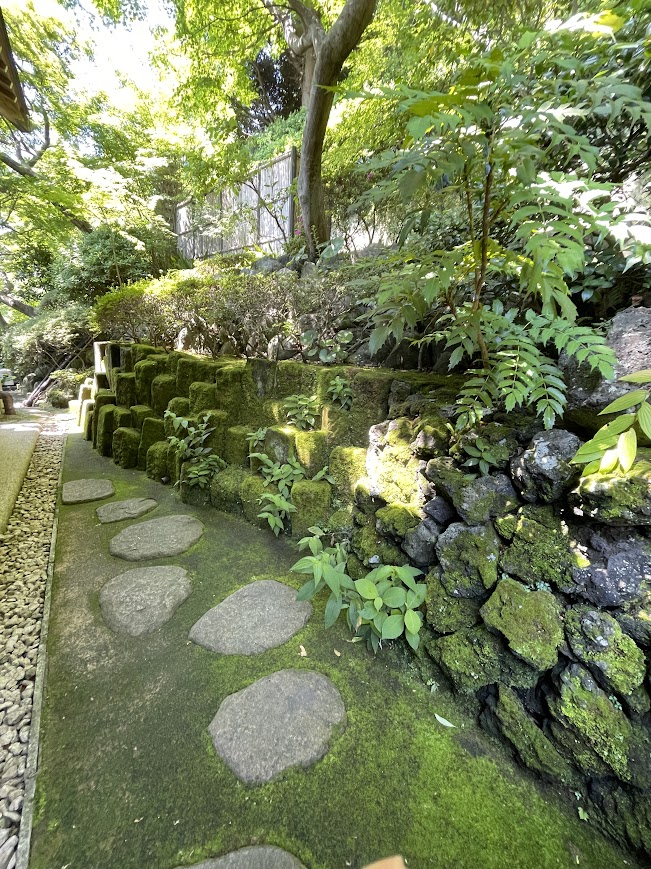
After exiting the cave, I was greeted by moss-covered stone walls, creating a charming, rustic scene that was incredibly soothing.
One Thousand Jizo Statues: A Stunning Sight, and Anyone Can Apply!?

Another highlight of Hasedera is the 'One Thousand Jizo Statues.
They are offered for the memorial services of family ancestors and unborn children, and believe it or not, anyone can apply to have one dedicated.
The rows of Jizo statues lined up are truly a breathtaking sight!
I thought about trying to count them, but with a thousand statues, it was definitely impossible...😅.
But the presence of the statues created such a sacred atmosphere that I couldn’t help but feel the urge to put my hands together in prayer.
Manji Pond and Hydrangeas
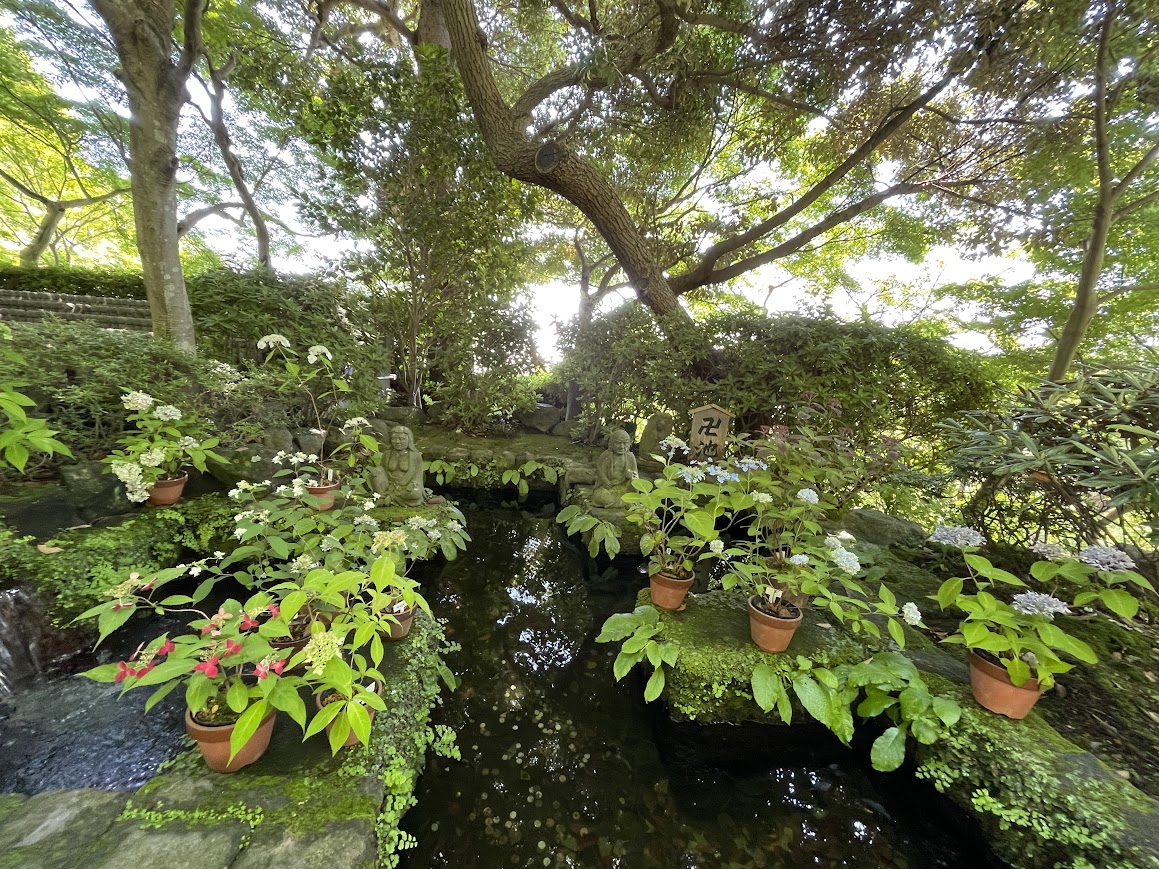
Lastly, I visited 'Manji Pond,' beautifully decorated with vibrant hydrangeas. The swastika (manji) is a symbol of good fortune, and the area around the pond was filled with blooming hydrangeas in pots.
Summary: Tips for Enjoying Hasedera While Avoiding the Crowds and Looking Forward to Next Time
This trip to Hasedera in Kamakura was all about enjoying the full-bloom hydrangeas. Thanks to my early morning visit, I was able to avoid the crowds and take my time. Next time, I’m looking forward to following the tempting aroma of the temple curry and enjoying some delicious food!
The journey continues... Wishing you all a wonderful trip! – TabiJun
Duration of stay here: 80 minutes
